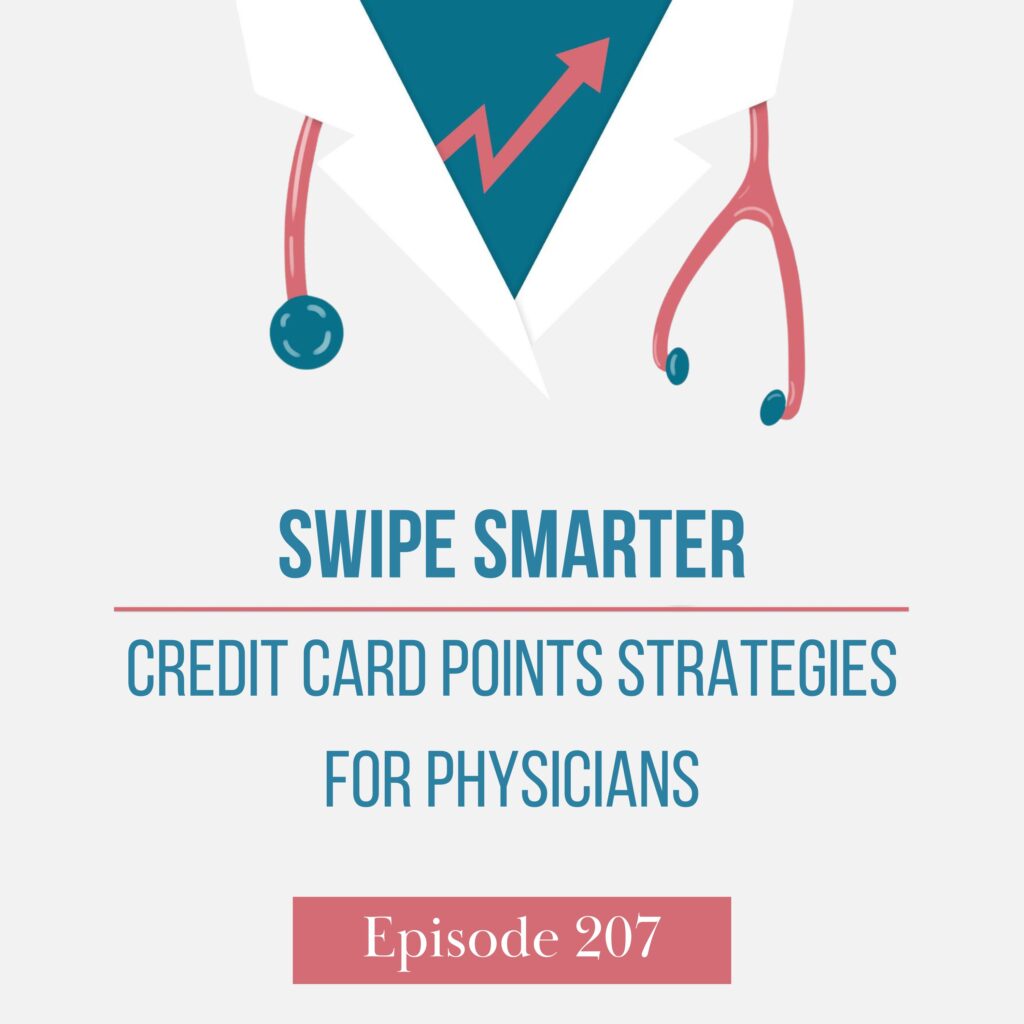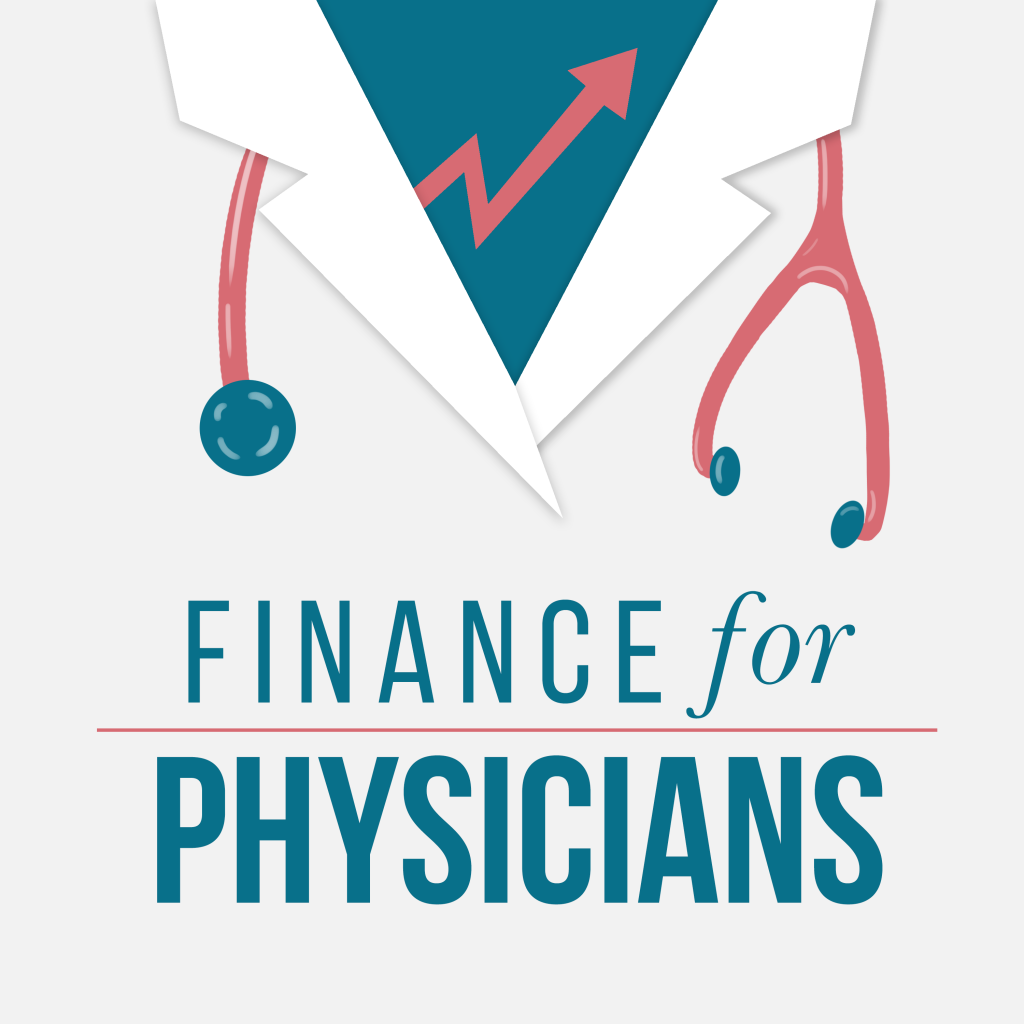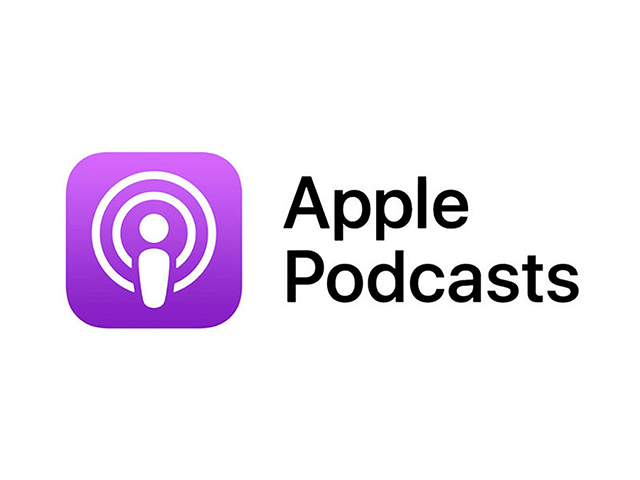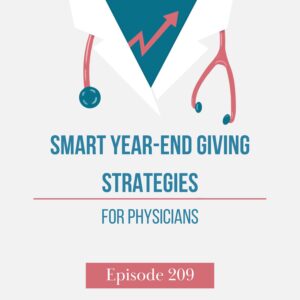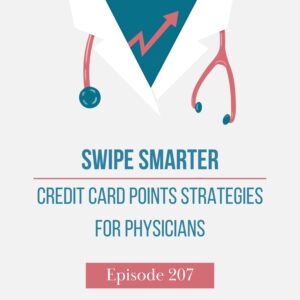Credit card companies are masters at dangling shiny objects — “100,000 bonus points,” “free flights,” “VIP lounge access.”
It’s tempting to believe these offers will save you thousands, but are they really worth it?
For most physicians, the answer lies somewhere between ignoring every offer and becoming the person with 75 credit cards.
Today’s guest, Jeff Wenger, has spent the last six months researching credit card rewards to find the sweet spot—strategies that deliver real value without turning financial optimization into a part-time job.
Listen in as we break down the math, the pitfalls, and the practical strategies for making your everyday spending work harder for you.
—————————————————————————————————————————
Transform your financial outlook today! Access our exclusive free resources for physicians and conquer financial stress. Access here. P.S. We value your opinion! Share your thoughts and insights with us. Your feedback helps us improve and tailor our content to your needs. Click here to give us a piece of your mind.
Links
- Rich With Points – Credit card comparison tool
- Connect with Jeff Wenger
- Connect with me on my LinkedIn
- Contact Finance for Physicians
- Finance for Physicians
- To schedule a call with one of our awesome planners, book HERE.
Full Episode Transcript:
Jeff Wenger: Don’t ever carry a balance on your credit card ’cause we’re talking about getting 4% or 5% back on more regular spending. But what are the APRs, what’s the interest rate you see on credit cards, Daniel?
Daniel Wrenne: As high as they let—29.9%, I don’t know.
Jeff Wenger: Yeah, 20% to 30% right now, I think, is average or normal, so even with the signup offer, if you’re paying 20% in interest, I’ve already negated it.
Welcome to Finance for Physicians, the show where we help physicians like you use money as a tool to live a great life. I’m your host, Daniel Wrenne, and I’ve spent the last decade advising physicians on their personal finances with the mission to help them understand that taking control of their finances now means creating a future where they can practice medicine where, when, and how long they want to.
Daniel Wrenne: Jeff, what’s going on, man?
Jeff Wenger: Oh, hey, Daniel. It’s good to see you again. It’s always a pleasure to talk finance and numbers and everything with you.
Daniel Wrenne: Well, especially when we’re talking about a little bit of a shiny object for me today.
I get these things in the mail every once in a while or these little popups when I’m logging into some of my financial accounts and sometimes they’re very alluring attempting to jump on. It’s like, “Hey Daniel, you’re super special and we wanna offer you a million points if you do these things and 75 different benefits and we’ll give you back rubs at airports and concierge lounge,” and it’s tempting. In fact, I probably see one of those every couple weeks maybe, and it’s tempting to jump on those.
Hopefully, you guys listening know what I’m talking about at this point. We’re gonna be talking about those special offers from the wonderful credit card companies, and Jeff has become quite the expert on these.
Jeff Wenger: Well, I’m a little bit at the beginning of a journey here with credit card points and miles, but yeah, it’s something that has piqued my interest in the last six months or so, quite a bit, and just started to try and sort out a little bit of the fact from fiction.
Daniel Wrenne: Right. The, yeah, the tricky part is there is potential value to be had. There’s a definite financial benefit to some of the offers that they’re handing out.
And the tricky part though, at least for me, is in not going too all in on it and having 7,000 credit cards and overcomplicating my life. I remember, I know a guy I used to go skiing with him, but he would have like 75 credit cards for rolling at any given time. Literally not a joke. Like 75, like tons and tons.
And he always talked about it all day long and every day. And so that’s always my concern. I’m like, I don’t wanna go too all in and have overcomplicating life and then temptations everywhere. But it is tempting to take teaser deal. I tend to not, but I’m curious what got you into it? ‘Cause I’ve stayed away from it myself, but.
Jeff Wenger: Yeah, I think really historically I’ve stayed away from it as well. Maybe a little bit of a bias there. Maybe my Dave Ramsey upbringing. I think I might, and maybe I’m getting this quote wrong, but I’m pretty sure he references a study of millionaires and says not a single one of them said it was because of credit par card points and miles.
And so it kinda just turned me off to, I’m like, yeah, you’re not gonna get rich with credit card points and miles, so what’s the point of, thinking about ’em? But what kind of drew me back in is I made a terrible financial decision to go on a trip to Disney World with my family.
So I might be working till I’m 95. We’ll find out.
Daniel Wrenne: You can’t put a price on a good time, Jeff.
Jeff Wenger: Yeah, it’s the most magical place on earth. But at that point I’m like, huh, you know what? I am spending a good amount of money on this trip, and could I do better by really being travel-focused with some of my spending or the cards there?
And that started me down the road of credit card points and miles and looking at what’s available there. It turns out for Disney, there’s not a whole lot that’s available if you actually want to go to stay at Disney. So if that was what you were interested in, shut it down now.
But it got me thinking that pretty much every family—I have a hard time saying every family or everyone I work with says something. But it’s almost universal that when we’re talking about things that our families that we work with in financial planning want to do. Let me ask you, what percentage of families do you think individuals that you’ve worked with in the past have listed travel as something they wanna do more of or a target they have or a goal that they wanna develop?
Daniel Wrenne: I think, yeah, it’s huge. 100%. I don’t know.
Jeff Wenger: Yeah, I was gonna say 117% say that. Say that. Yeah.
Daniel Wrenne: I think usually you could look at the statistics economically. I think America has a very high average income relative to the world.
So I think the higher you get above baseline economic standards, you start to spend on discretionary spending, and like travel is typically a huge line item for the average family as they start to have higher income that they spend more on. That’s just a pretty standard, and we see it in a individual basis, but it definitely plays out in the stats as well.
Jeff Wenger: Yeah, I think it’s pretty much everyone I talk to says, “I want to do more traveling.” And I guess with that in mind it had me thinking that we talk about all sorts of fun things. We talk about retirement planning, but that’s for 55-year-old Daniel, 65-year-old Daniel, something like that.
That’s for future me and future you. Yeah. But travel is something that could happen all the time right now, anytime. And so just looking at can what I’m spending be optimized to help my goals a little bit more really piqued my interest and got me looking into a little bit further?
And so that’s where I think, when done responsibly and with a plan, it can actually help, develop some of these goals a little bit and support things and provide some real dollar value for the families that we work with.
Daniel Wrenne: What I found is when I get those teaser offers in the mail or whatever online, when I log into Amex—I’m a Amex guy.
So I log into my Amex and they throw out a new offer. And when I get ’em, the routine I go through is I usually, I’m like, “Ooh.” And then I start looking into it and I’m like, and research it a little more, and then it starts to get complicated and I’m like, I don’t know. And then I’m like I’m not even sure.
So I’m like five hours in, I’ve spent way too much time on this, and then I throw it away. That’s my routine usually. And I’ve gotten less on the time spent on it. Normally it’s get it in the mail, five minutes later after opening it, I throw it away. I’m like, I don’t even want to.
But I guess I’ve had a hard time making sense of all the stuff in a time-efficient manner. There’s a ton of stuff out there.
Jeff Wenger: Oh yeah. I think that’s where it comes down to, you can go down a deep rabbit hole and it’s a little scary the direction you can go with credit cards and points and miles, but there’s a whole spectrum of ways to optimize the spending there so that you’re getting a little bit more back from very low effort to maybe this is something that you just love to do and you want to spend time on and you can get some really amazing value.
There’s a spectrum all from that almost no effort to “this is my life.”
Daniel Wrenne: “What if I have limited time?”
Jeff Wenger: So with limited time, I’d say there’s a couple of different options here for how you set up your credit card spending. And so that would be—one would be if you just wanted to get some cash back.
Let me put it this way. In credit cards, there are two camps there, two different ways to go overall. One is cashback and one is travel. Team travel. Team Cashback points. Yeah, so points, that’s where you start to get into the little bit more effort, little bit more reward—maybe a lot more reward, a lot more effort type of that camp.
But cash back’s great too.
Daniel Wrenne: Cash back’s straightforward, too. It’s like percent, you spend, you get money.
Jeff Wenger: Very straightforward. So yeah, you get a percentage of that back usually with a cash back credit card. And so the nice part there is really almost no effort on your part other than if you need to organize your credit card setups so that you’re getting a nice percentage back on the different categories that you would spend on.
But once you get cash back, you can use that for anything, right? Which is great. ’cause it doesn’t have to be for travel. You can put in a bank account, you can invest it, you can pay down your student debt. You can do a lot of things with that.
But yeah, so maximum flexibility there and really not a whole lot of effort when you’re looking at cashback other than getting the setup right for you. And then getting cash back. The nice part about cashback too, or any of these credit card rewards, is they’re not taxable. They’re considered rebates of stuff you’ve already spent.
Daniel Wrenne: Consult your accountant for advice on that one, but.
Jeff Wenger: Yeah, always do that. But they’re categorized as, it’s a rebate of your spending. Compared to earning that cashback, you’re just saving on what you’re spending instead is that idea.
Daniel Wrenne: Right. That definitely adds little extra perk. So if I’m thinking about cashback sounds good.
I want to go simple. What’s competitive? Let’s just say I’ve not explored this very often, very much, and I’m like, “Oh, you’ve captured my interest in that.” ’cause I think some people think of it like, I gotta be the guy that I was just referring to with the 75 credit cards. It’s all in on it.
Or I do nothing. And that’s how I’ve thought of it. It’s like I either go all in on it and I’m like a credit card junkie, or I’m like doing nothing and I just keep the same card for forever. So if I’m in the camp of I’ve kept the same credit card forever and never paid attention to it, what’s a competitive measure of how you’re doing in terms of this? Maybe start with cashback.
Jeff Wenger: Yeah. I’d say at a minimum, you’re gonna want to see 2% cash back or a credit card. And there are a lot of options out there for 2%, where just anything you spend on, you get 2% back.
Daniel Wrenne: Yeah, I know a lot of ’em don’t offer 2%, like a lot.
Jeff Wenger: Yeah. There’s a lot that don’t.
Daniel Wrenne: A lot of ’em will be like 1% or they’ll say 2% up to X dollars and then they’ll do 1% or one and a half, or one of the ones I know, it has like unlimited 2% is, I think Fidelity still maybe has that. Fidelity’s always been one that I believe has the 2% unlimited, so it’s just like super simple, straightforward 2% cash back. Unlimited. I think there’s another one from, is there another Capital One one or…?
Jeff Wenger: So you’re right. Fidelity has a 2% cash back one. Capital One has a—so they have their venture cards that are 2% on everything.
Daniel Wrenne: Is it unlimited?
Jeff Wenger: It is unlimited. It’s actually on the points and miles side of the equation, but—
Daniel Wrenne: But it’s tech—it could be used for 2% cash.
Jeff Wenger: In many cases, yeah. And what else? Citi. Citi has the double cash. So yeah, you get 1% I think when you spend it, and 1% when you pay the bill. So for 2%, right? And there are several other options there for just a basic 2%. You don’t even have to think about it.
If that was the only card you used, you’d get 2% cash back on everything that you spent.
Daniel Wrenne: Right. So if you look at your credit card and you see you’re getting, say you spend $100,000 a year, you want to be getting $2,000 of cash back at least. I mean, if you’re getting 1700 a year, then it’s is it really worth $300 to get another card?
That’s a super simple way to look at it. But now if you’re spending a million dollars a year, obviously the numbers are bigger. 2% of a million’s $20,000 a year instead of $2000 a year.
Jeff Wenger: Oh, yeah. To your point, a lot of those cards don’t have any annual fee. We didn’t even talk about fees on.
Daniel Wrenne: Yeah, usually the cash back ones don’t, which helps.
Jeff Wenger: But then beyond that, you might have some specialty type cards that are in a bit more in different categories. And so you can set that up a lot of times. Like with Danny, you said you’re an Amex guy? You love Amex?
Daniel Wrenne: Yeah. I have Amex.
Jeff Wenger: Like with Amex, you’ve got the gold card that’s 4% back on dining and groceries—I’m sorry—So it’s four points per dollar spent on dining and groceries. They don’t have as easy of a cash back function.
But there are other ones. Capital One has the saver card that is safer as in ooh, it tastes so good, which has 3% back, I believe it is on groceries and dining.
So you can start to get a little bit back more cash wise on some of those categories that you also tend to spend more money on. I don’t know about your family, but we spend a lot on groceries.
Daniel Wrenne: Yeah. I’m right there with you. Okay, so cashback’s the simplest, straightforward approach, and you can just get a flat percentage, or cashback can get a little complicated where they have like rotational categories and that’s pick your category or not.
Jeff Wenger: You can get more complicated and less complicated on any variation of these. But I’d say, yeah, there are some, and I feel like an advertisement for a lot of banks today, but Citi has one called the Custom Cash, where it’s 5% on your top spending category of the month, so most people in the points and miles or cash back game would say, take that card and use it for one thing. I know my Custom Cash is for gas, so that way you’re always getting 5% back on gas. Something like that.
Daniel Wrenne: Yep.
Jeff Wenger: But yeah, cash back really easy, really flexible.
Daniel Wrenne: Yep. And 2% is a good kind of baseline. Ideally, everybody’s getting at least 2% ’cause you can get 2% from one card with unlimited. And that’s as simple as you can get.
Jeff Wenger: Exactly. Exactly. You could do one credit card and get some money back.
AD BREAK
Daniel Wrenne: Let’s take a quick break to talk about our firm, Wrenne Financial Planning.
The goal of our podcast is to empower you to make better financial decisions, but sometimes the best financial decision you can make is to work with someone who understands your financial goals and has the expertise to keep you on track to reach them. That’s where Wrenne Financial Planning comes in. We are a full-service financial planning firm that works with over 400 physicians and their families across the country.
We charge a transparent monthly flat fee for our services and offer virtual meetings you can take from anywhere. Best of all, you’ll get to work with a team that specializes in working with physician families. So whether you’re starting out and wondering how you’ll balance your student loan payments and saving for a home, or you are established physician trying to figure out how to pay for your kids’ college and how much you need to save to reach financial freedom, we can help.
I’ll put a link in the show notes to schedule a no-obligation meeting with one of our certified financial planners. Wrenne Financial Planning, LLC is a registered investment advisor. For more information about our firm, please visit wrennefinancial.com. That’s W-R-E-N-N-E financial.com.
AD BREAK END
Daniel Wrenne: So it gets more complicated when we start talking about the points or the vacation category rewards, I don’t know what to call ’em. Some people call ’em points and call ’em rewards, credits, whatever. It’s non-cash back rewards, we’ll call it.
Jeff Wenger: Yeah. So the way to think about that is it’s a currency of a bank, so it’s not a dollar, it’s not a cent, it’s a point, it’s its own…
Daniel Wrenne: Malibu Jack’s bucks. We have Malibu Jack’s, like that’s where my kids like to go. That’s not a good conversion rate. You earn the tickets and the points and then you get to go buy the cheap of plastic gift at the end, or prize at the end.
That’s a bad conversion rate.
Jeff Wenger: Yes, but kinda the next level of getting value from your credit card points or miles would be most of those big banks. So Chase and Capital One and Citi and Amex have a travel portal that you can spend your points in. And depending on that credit card issuer, you might get a bonus for using your points in their portal.
So Chase, for example. If you have one of their Sapphire travel cards, so there’s a couple of them there, but you could get a 50% bonus using your points as a cent. So one point, instead of being worth 1 cent, like it would be on a cash back, card’s now worth one and a half. And so you get 50% more value if you’re using that money for travel, those points for travel.
And so maybe just to give you an idea, maybe this is backtracking or forward tracking, but I did a kind of cursory look at different families that I work with, and, on average, there was this lifestyle spending that would be generally credit card spending of about $150,000 a year.
And so let’s just say that you can get three points back on that per dollar. Probably a good average if you have a couple of credit cards and you’re maximizing your spending on groceries and one and everything else on another, something like that.
Daniel Wrenne: Three points?
Jeff Wenger: Yes. Three points.
Daniel Wrenne: Not dollars? Not three percentage points, but three reward points?
Jeff Wenger: Yeah, I think that’s a good way to start thinking about it though, is it’d be three percentage, 3%, of what you spent. Three points per dollar. So instead of it being more 3 cents, now each one’s—now it’s four and a half cents per dollar if you’re spending in the portal. And so that can be a nice flexible option.
Again, if your target is more travel, because let’s say you go to the Chase portal and you say, “I wanna get a flight from Canton, Ohio to Flagstaff, Arizona.” It comes up just like it’s kind of Google flights or something like that. You can see all the options for booking and you just book the flight that you want.
And every 1 cent that you had is now worth one and a half cents for that flight. So it keeps things pretty flexible on the travel side where whatever your plan is, it just amplifies the value of those points for you. So instead of it being $4,500 worth, if it was 1 cent per point, you’d be getting almost $7,000 worth of value for travel if you were booking it through the portal.
And that’s another kind of easy way to do this if you just wanna—And it’s a good option if your schedule’s tough. If you can’t change your dates, if you can’t change your destination, you know exactly what you want to do. That gives you an option. So that’s another way to use those points and get some extra value out of it.
That’s several thousand dollars for the normal family we work with each year.
Daniel Wrenne: So do you think, you’re saying, if you’re using the points route, like 3% is a good target instead of, so we were talking about cash rewards, let’s just use cash equivalent. You’re saying if I’m using points instead, maybe 3% would probably be a good baseline, minimum target to expect if I’ve got one or two cards, three or four cards, is that correct?
Jeff Wenger: Yeah, I would say try to—and that’s where you start to optimize your spending with your cards a little bit. And you can do that probably with two or three credit cards to kinda of inch up towards that 3 cents per point or higher type level instead of that baseline of two—you could definitely get two, easy peasy.
But I’d say three is a realistic type of target for getting on your spending on average.
Daniel Wrenne: Yeah.
Jeff Wenger: If you have just a couple of options there.
Daniel Wrenne: Yeah. And then it gets really interesting when you start getting into the high annual fee cards.
Jeff Wenger: Yeah.
Daniel Wrenne: They have all these extra perks.
Jeff Wenger: Yeah, and so that’s where some of these are integrated with one another.
So to use that travel portal, usually you’ll need one of those cards that gives you access to it or something like that. Or for that benefit of 50% more, you’d need the Chase Sapphire Reserve card, which does have a $550 annual fee right now, so that sounds high. That definitely was sticker shock to me looking at annual fees.
Daniel Wrenne: Unless they give you $550 right back, which they do.
Jeff Wenger: Yeah. So yeah, I guess that one.
Daniel Wrenne: They give you a travel credit, right? Just straight up.
Jeff Wenger: Yeah. Chase does a $300 travel credit, which is not just for their portal, like just any travel spending code as travel, it reimburses. So you’re down to $250 there and then if you have that extra value from the points, great.
It also covers some things like TSA pre-check or global entry, which that’ll save you a hundred dollars every four years or something like that. The biggest benefit. It’s not the smallest one.
Daniel Wrenne: Yeah.
Jeff Wenger: But then a lot of them will also have something like lounge access. So Chase has their Sapphire lounges and Amex has the Centurion lounges and Capital One has their lounges too.
And then there’s some more generic ones. So if you put a value on that, maybe it does save you 50 bucks on food every time you go through the airport. Because food, drinks, things like that are included in the lounges and you get a little bit of a quiet spot if you have to go through there.
In fact, on our Disney trip we did, we had a flight delayed and got to spend some quality time in the Centurion lounge, in the family room watching Paw Patrol. Something that might not have happened.
Daniel Wrenne: Where was it? Which airport?
Jeff Wenger: That was in Charlotte.
Daniel Wrenne: Charlotte, okay. Yeah. Those lounges are nice. I would say, I don’t know about kids. I’ve never had kids in the lounge.
Jeff Wenger: Yeah. So that was helpful for us in that situation. But the point being, you might have to have one of those travel cards to access some of the portals. It depends on the bank.
Some require it, some don’t. But the travel portal is another way where if you’re focused on, like if you said, Hey, I wanna develop my travel goal, I wanted to spend more, do more with my dollars, that’s another way to be pretty flexible. Use those points and just spend them to do what you wanted to do.
And then going down the rabbit hole, there was one more that this is the one that takes a lot more effort and flexibility, but can possibly return a lot of value. And that would be all of these banks. So in addition to using their travel portal, also have relationships transfer partners. Yeah, so like Chase and Hyatt hotels, you can transfer your points from Chase and think of it like a currency conversion.
Daniel Wrenne: Yeah.
Jeff Wenger: Into Hyatt points, and then use the Hyatt points for Hyatt stays, which that’s a classic example right now of one that gets usually at least around 3 cents per point of what you’ve transferred. So you start to get into higher-value dollars there using those transfer partners. But it requires doing a lot of research, usually looking at availability.
Maybe you change your plans around when the dates are available for things or the award availability is there, and so that’s where it depends for our families that we work with. Is that something that would even work for you? Because if you have—“I have to go on this trip on spring break, March 21st to the 28th, 2025,” something like that, you don’t have as much flexibility.
As if you’re like, yeah, “I’d like to go to Europe sometime in the summer of 2026.” It doesn’t matter where in you’re, there are a lot of places we could go. That’s where you can start searching for these awards and get some pretty outsized value potentially. Just to give you an idea of what that might look like, would be you could fly a business class, lie flat seat from the US to Europe and if you’re points for like—on $150,000 of spending, that might cover four people doing that.
Daniel Wrenne: 150,000 points. So it would be thousands of spending.
Jeff Wenger: Of spending. So if you’re a person that you’re on average spending maybe that $10,000, $12,000 a month on credit cards and that’s not abnormal for the families that you might see, that then becomes worth $20,000, $25,000 of what you would pay for in cash or.
Daniel Wrenne: That’s if you’re working it.
Jeff Wenger: But that is if you’re working it, yeah.
Daniel Wrenne: Yeah. All right. So if I’m really like looking at this without getting too much in the weeds, you got, I’d say 2% is a minimum if I’m not work, if I’m just getting a card and keeping it in minimum effort. And then maybe 2% to 4% if I’m just doing a little bit of strategic, maybe a couple cards or whatever based on my spending.
And then if I’m really working it, what is that $20,000 on $150,000? I don’t know what percentage that is. That’s a lot.
Jeff Wenger: Yeah, that’s getting up there.
Daniel Wrenne: So it’s 13%. Now working it, but also limited. Very limited flexibility. You have to—like most people travel on their time. They pick the date and then they structure it. Whereas this strategy Jeff’s talking about, it’s like you watched the deals and then picked the travel. It’s a different approach, I think. I’m assuming that’s the strategy you’re talking about. Yeah.
Jeff Wenger: I’d say it takes a little bit more flexibility, either in the location that you want to go to or the dates you want to go.
Daniel Wrenne: And most people, at least I know, have very little of date and location flexibility. When they, at least when they approach travel, they tend to be like, “I got these dates and I’m going there first,” and then they go and plan it. So that this kind of, that high dollar value benefit is gonna put the kibosh on that.
We didn’t even talk about welcome bonuses. That’s another thing. That’s where you really get, if you like—my buddy that I was talking about that had 75 cards, he would swap cards. And so you get, there’s only, I guess run out at some point, but like when you switch to different cards, you can get these welcome bonuses and that’s like the teaser deals that they took, 100,000 points if you move, if you spend $5,000 in the first three months or whatever.
Jeff Wenger: Yeah. So yeah, I think for many of us, simplicity is important and so you can get a decent amount of points coming just from your regular spending with having one or two credit cards that hit that 2% to 4% kind of range. But yeah, signup bonuses are much larger. Where that could be worth, the example you just gave is one that’s current right now where Chase is doing a hundred thousand points for $5,000 of spend on one of their Sapphire cards, which if anybody’s looking, that’s a pretty good offer, but that just of the 1 cent per point type of value, that’s 20% back on what you were spending already. So if you spent that $5,000—
Daniel Wrenne: What if it’s one—so that’d be 30% on one and half?
Jeff Wenger: So it’d be 30% on one and a half. Yeah. So it adds up pretty fast on those welcome offers if you’re use, however you’re using the points so that Sapphire preferred one I was just referencing, it has the travel portal with a 25% bonus to your point. So right off the bat, that’s worth $1,250 to you if you used it for travel through Chase, so that’s a pretty good return on what you’re spending.
Daniel Wrenne: Not bad.
Jeff Wenger: And so that’s where, if you’re signing up for those bonuses, that certainly can accelerate how many points you get and really supercharge how you use that option or how you use your points.
Daniel Wrenne: Yeah. Now, and then we gotta, before we start drop up, we gotta throw out the disclaimers or—really it comes down to it’s your situation. Super important. Like I’ve recommended strongly against getting any credit cards for certain situations and then other cases, this strategy makes a lot of sense. So there’s a few key things you gotta really, I guess you gotta have an order first before you even consider this type of stuff.
Jeff Wenger: Oh yeah. I think there are some unwritten rules or just baseline assumptions to get any value out of all of this. And the first one is, probably the biggest one is don’t ever carry a balance on your credit card. Because we’re talking about getting 4% or 5% back on more regular spending, but what are the APRs, what’s the interest rate on credit cards, Daniel?
Daniel Wrenne: As high as they let—29.9%, I don’t know.
Jeff Wenger: Yeah, 20% to 30% right now, I think, is average or normal. So even with the signup offer, if you’re paying 20% in interest, I’ve already negated it.
Daniel Wrenne: And I would go even further and say, I wouldn’t even consider this strategy, or when I say this strategy, I wouldn’t even consider having more than just one credit card or even maybe using your credit cards too aggressively if you don’t have an emergency fund. Like if you don’t have a buffer of cash. ’cause that’s really just like covering, like short-term, unexpected. ‘Cause if you don’t have that, you’re gonna have to probably go into credit card debt.
And so credit card debt pretty much ruins this whole strategy no matter what strategy you’re using. It just totally ruins it.
Jeff Wenger: Yeah. Or if you really have to use the credit card and you have no emergency fund, do the cash back option. Start building that emergency fund.
Daniel Wrenne: Yeah, there you go. Yeah, that’s a good idea.
Fidelity has a great program for, if you’re struggling to save, they will put it into your brokerage account or your 529. Which I love if, especially like I said, if you’re struggling, if you’re focused on saving and investing, or you’re struggling to, that’s just a nice, super simple automatic program that they do, and it’s 2% unlimited.
Jeff Wenger: Yeah. But yeah, I think that’s the biggest one, is we are operating under the assumption that you’re always paying off your credit card. Don’t carry a balance on those, or else the points are worth. They’re still worth something, but they’re not outweighing the fees for sure.
Daniel Wrenne: And the stress of the credit cards too. Credit card debt is super stressful.
Jeff Wenger: Yeah, for the most part, the families we’re working with, they’re paying their balances off. That’s not the biggest issue. Some people have some credit card debt and that’s something we’re working on too, but that’s kind of table stakes for this.
I think the next one is probably the biggest pitfall that is likely to occur with the families we work with, that they’re paying off their balance. But you mentioned, I think, the very beginning of this episode, you said shiny object, right? Yeah. And I don’t know if any of us are totally immune to shiny objects, but you said there’s the signup bonuses. They’re amazing.
But there’s this temptation to spend more than you normally would just to earn the points. Yeah. And so what we’re trying to do here is not spend more just to spend more and get more points, but it’s to optimize what we’re already spending in a way that we get more value out of it.
But particularly if you see, oh, there’s this signup bonus, I can get 250,000 Amex points if I only spend $20,000 in the next three months.
Daniel Wrenne: Yeah, we were thinking about that trip. Why don’t we just go ahead and do it?
Jeff Wenger: Yeah. Thinking about the trip, maybe, or now I gotta think of a way to spend this.
Maybe it falls into your normal spending. Daniel and I were talking about, we both had have HVAC stuff going on, so just replaced a furnace and an air conditioner. Yeah. That was a really good opportunity to get a signup bonus on spending a good amount of money.
Daniel Wrenne: Does your HVAC guy take credit cards? Mine doesn’t.
Jeff Wenger: Oh, they did. They did. They also had a fee for using the credit card.
Daniel Wrenne: Oh, that’s another complicating factor.
Jeff Wenger: It is. So you gotta do the math, make sure the math works out for you. But again, this was a signup offer. It was like 40% of your spend, you got back into point. It was a no brainer to pay 3% to get 37% in my mind. But yeah, that’s the thing. Just beware of the temptation to spend more, to earn those points. ’cause you could just spend and buy the trip too. You don’t have to earn the points to buy the trip.
Optimize what you’re already doing.
The one other thing just to watch out for is just keeping different cards around. Some of these cards have an annual fee. Some of ’em are large, some of ’em are small, larger being almost $700. Smaller being maybe $95 a year or something like that. But do the math, pay attention to how it works out for you, and if you’re getting value out of the card that exceeds the fees.
There are lots of different things that go into that, and we’ve just barely scratched the surface today. But don’t keep a card around just because it feels cool.
Daniel Wrenne: Yeah, you gotta track it. That’s the thing. It’s just a matter of do you want to put in a little bit more effort to get a little bit more benefit out of this?
It’s ’cause you shouldn’t just do it just to get the deal. You gotta do it right, which means you gotta do a little research, track it over time. And so if you’re not willing to do that, then the simple approach is not, that’s like I said, that’s the route I’ve taken or I’ve gravitated towards. That is like the simple approach.
’cause I don’t really want to go that route. Jeff’s taken the more, a little bit more towards the strategic approach, but he knows he’s tracking these things over time, and so you can keep a pulse on it and make sure it’s still benefiting you. There’s not really any, it’s like a lot of this stuff.
There’s no right or wrong way to do it. It’s just a matter of. And one other thing, all throughout, if you’re working with us and you’re listening to this, feel free to reach out. ’cause the nice thing about it is if we’re working with people one-on-one, we can we can go in there and look at your spending and be like, “Oh yeah, here’s some things you might think about changing.”
And we just need to know, confirm which credit card you’re currently using, and then look at your spending and then we can give you some ideas of potential strategies, based on how much change or how much you want to get into the credit card game. Any other parting thoughts, Jeff, on takeaways or resources or…?
Jeff Wenger: Oh, you just mentioned if they’re working with us, which is a very small percentage of who we’re talking to right now, probably.
Daniel Wrenne: Yeah.
Jeff Wenger: There are lots of resources out there. You can go down a rabbit hole here, but there are good podcasts out there that are dedicated to this topic.
Yeah. And there’s even a website out there. I’ll call this one out by name. No affiliation. Do all your own due diligence here, but it’s called Rich With Points.
Daniel Wrenne: What is it? Say that again.
Jeff Wenger: It’s Rich With Points.
Daniel Wrenne: Yeah.
Jeff Wenger: The guy’s name is Rich, and he talks about points. If you ever worked with me you might tell why I like him.
He is kinda maybe a little similar to me, but he put together a website where basically it has all the different credit cards that are out there. You can put in your budget, like what I spend on groceries, what I spend on travel and gas. Then start to compare different credit cards if you’re getting cash back or the portal or using it for travel, and say, “What’s the best setup for me?”
And just compare that. So that’s a really fun tool if you wanted to do it on your own. But yeah, so right now that’s a fun resource that I’ve been playing around with.
Daniel Wrenne: Yeah. Yeah, that’s good that you just gotta have the resources and do a little homework on it. That’s what I’ve found is there’s a lot of different resources out there.
You just gotta go out there and find them and plug in the numbers and do the spreadsheets and make sure you’re tracking it over time, or just simplify it and toss out the deals. Put the blinders on. ‘Cause those shiny objects will sometimes get you.
Jeff Wenger: Oh yeah. Thanks for taking me down the rabbit hole here, talking about all these shiny objects.
Daniel Wrenne: Unfortunately, you’ve gotten me, or maybe fortunately, you’ve gotten me a little more curious about credit cards again, so I’m gonna go check out that website.
I’m curious about—I haven’t been on it, so maybe we’ll chat again on credit cards.
Jeff Wenger: All right. I’m looking forward to it.
Daniel Wrenne: I appreciate it, Jeff.
Jeff Wenger: Alright, have a good one, Daniel.
No guests or clients appearing on the podcast received any form of compensation for their appearance and obtained no other benefit from us. It should not be assumed that every client has had the same experience.



